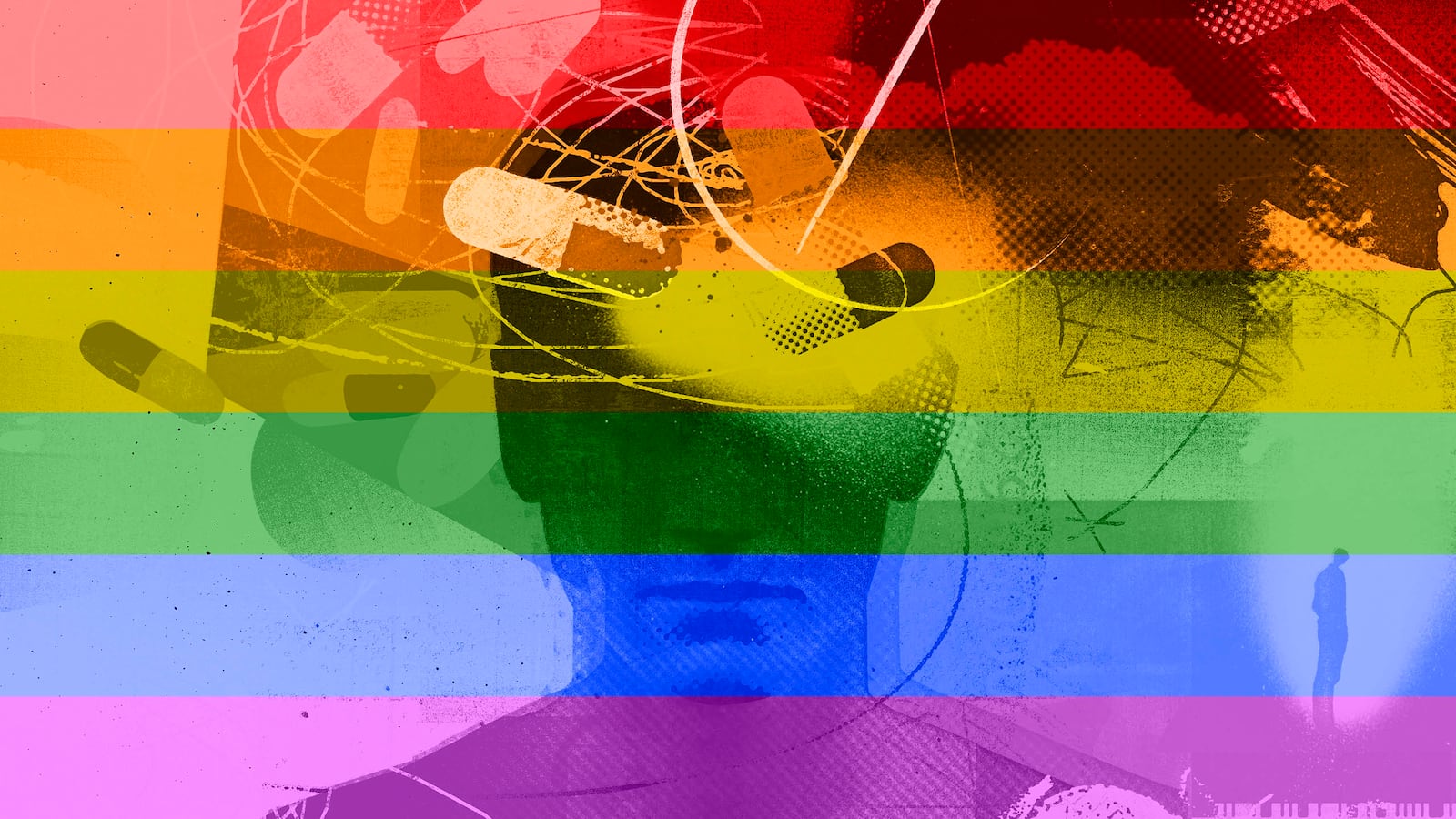Researchers have long known that LGBT people are more likely to abuse substances than their straight and cisgender peers, often due to the same minority stress that many marginalized groups experience. Alcohol and drugs become a coping mechanism for daily discrimination.
One might hope that a rising generation of youth—who tend to be more accepting of LGBT people—would be able to dodge this minority stress.
But a new study of lesbian, gay, and bisexual youth published in the journal Drug and Alcohol Dependence makes it painfully clear that they remain “at increased risk relative to heterosexual youth for polysubstance abuse.”
Gay and lesbian youth in grades 9 through 12 were significantly more likely than their straight counterparts to be co-users of marijuana and nicotine, while bisexual youth were at heightened risk of being in any of the four substance-using groups identified in the study.
“My recent research suggests that LGB youth are still feeling the need to use substances to cope with minority stress,” the study’s author, Oregon State University psychology professor Dr. Sarah S. Dermody, told The Daily Beast. “I would suspect that reducing societal factors leading to minority stress would reduce these drug use disparities.”
Dermody’s study is a statistical analysis of over 15,000 youth who responded to a 2015 Centers for Disease Control and Prevention survey, which contained questions about the frequency of substance use—as well as a sexual orientation question with the options “heterosexual,” “gay or lesbian,” “bisexual,” and “not sure.”
From the CDC data, Dermody identified four different groups, or classes, of substance users: the alcohol class in which “most [youth] reported binge drinking,” the marijuana and nicotine class in which the “majority” said they used “at least one nicotine-containing product,” the polysubstance and e-cigarette class in which “all participants reported alcohol and marijuana use and most participants reported binge drinking and e-cigarette usage,” and, finally, the polysubstance and tobacco class.
Youth who were questioning, or “not sure” about, their sexual orientation were more likely to be in this last class than youth who were sure they were straight.
The stakes of substance abuse in LGBT youth are potentially lifelong.
As the study itself notes, youth who use these substances at elevated rates will be “at risk of several negative health and social outcomes, such as addiction, and poorer cognitive, social, and academic functioning.”
We can see these outcomes in LGBT adults: As the National Institute on Drug Abuse notes, LGBT people have a “greater likelihood” of developing a substance use disorder such as alcoholism, and they tend to have “more severe” substance use disorders when they start rehab programs.
That’s why Dermody says LGBT youth need to be helped while they’re still, well, youth.
If you help LGBT youth “when they are first experimenting with substances,” Dermody told The Daily Beast, “they can be provided the necessary interventions to prevent the development of difficult-to-treat addiction.”
Statistically speaking, bisexual youth may need special attention. In her study, Dermody found that this sub-group of youth was statistically more likely than heterosexual youth to be in each of the four classes. That conclusion lines up with previous studies—and it suggests that bisexual youth have to endure high levels of minority stress.
“One of the leading theories for the increased drug use in bisexual youth is that bisexual youth face even more stigma and discrimination based on their sexual identity,” Dermody told The Daily Beast. “There are sometimes misconceptions about bisexual individuals being ‘confused’ about their sexual orientation, because they are not aligning with a binary view of sexual orientation—either homosexual or heterosexual.”
Indeed, as The Daily Beast has previously reported, emerging research published in the Journal of Bisexuality shows that bisexual people face significant discrimination within the LGBT community itself in addition to the discrimination they face outside of it. That may be fueling the “greater substance use patterns,” Dermody says, but “future research” is necessary to fully understand what’s happening.
It’s also essential, the researcher says, to learn more about rates of substance abuse among transgender youth.
Dermody’s study couldn’t examine that angle because the federal survey on which it was based had no questions about gender identity—proof, she says, that “government-funded, large-scale studies” need to ask more questions about LGBT identity—but initial research in this area suggests that transgender youth have much higher rates of substance use than their cisgender counterparts.
Overall, one of the major contributions of this study is that it shows that substance use problems among LGBT youth may be more complex than we already knew. As the study notes, previous research in this area has focused on differing rates of use of “individual substances” between LGBT and straight youth, looking at, say, alcohol use in isolation.
By examining patterns of polysubstance use instead, Dermody can state that those disparities “likely occurred in a broader context of polysubstance use.”
In other words, bisexual youth will show up on any given study as having higher rates of drinking than straight youth—but that doesn’t tell the whole story; those bisexual youth may be drinking as part of a broader pattern of substance abuse that encompasses smoking as well.
Going forward, Dermody hopes that we can pay more attention to the ways in which “the LGBT community is specifically targeted by the alcohol and tobacco industries,” as she told The Daily Beast.
As a 2012 brief from the Center for American Progress noted, alcohol and tobacco companies often “exploit the connection many gay and transgender people have to bars and clubs as safe spaces for socializing” in order to sell their products. Liquor brands continue to be major advertisers in the LGBT space—and that advertising almost certainly reaches youth.
“Even if we could eliminate minority stress,” Dermody told The Daily Beast, “we have to consider how certain industries are advertising to LGBT youth—and how these targeted ad campaigns can have a negative impact on LGBT well-being.”
Dermody concludes in the study that researchers need to learn more about the “factors” like “minority stress and peer influences” that are behind these disparities—and “to identify potential protective factors” that could help reduce them. But perhaps the most important thing we could do for future generations of LGBT people is simple: support them.
“It is important to see if greater recognition, appreciation, and acceptance of those in the LGBT community translates into reduced minority stress, and less need for these youth to use substances as a coping mechanism,” said Dermody.






